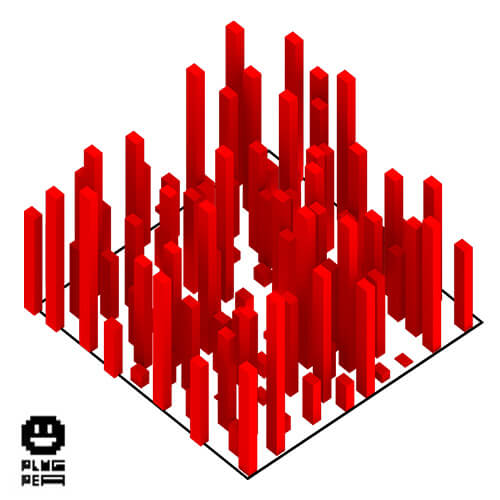Attention, game developers and Unity enthusiasts – if you’ve ever embarked on the exhilarating journey of game development, you know that the right Unity assets can be the game-changer, turning your visions into digital realities.
Here, we’re diving deep into the heart of Unity’s magic, focusing on the unsung heroes of game development – plugins. Get ready for the ultimate “Unity Assets Showdown” as we compare and analyze the best Unity plugins, exploring the tools that can elevate your game from ordinary to extraordinary.
Buckle up, as we navigate through the dynamic landscape of Unity assets, seeking the gems that will take your game dev experience to new heights!
The Essentials: Understanding Unity Plugins
So, you’ve dipped your toes into the vast world of Unity game development, and now you’re hearing a lot about Unity plugins. What’s the buzz all about? Well, my friend, let’s break it down in a way that even your grandma could understand.
Definition of Unity Plugins and Their Role in Enhancing Game Development
Alright, let’s start with the basics. Unity plugins are like the secret sauce in your game development burger. They’re these nifty add-ons that you can plug into Unity to spice up your game-making experience. Think of them as power-ups for your development environment.
Imagine you’re building a house, and Unity is your toolbox. Now, plugins are those super cool gadgets you add to your toolbox that can do things your regular tools can’t. They can handle specific tasks, add new features, or even streamline your workflow. In short, Unity plugins are the game dev’s best friends, making life a whole lot easier and your games a whole lot cooler.
Overview of How Plugins Extend Unity’s Functionality
Now, let’s talk about how these magical plugins extend Unity’s functionality. Unity, on its own, is like a superhero with a bunch of powers. But, you know what? Even superheroes need a sidekick or two.
Plugins are those sidekicks. They bring in extra powers, like the ability to effortlessly integrate third-party assets, add stunning visual effects, or even handle complex AI. They’re like the Robin to your Batman, enhancing Unity’s capabilities and allowing you to do things that would otherwise make your brain hurt.
So, if you’re feeling like your game needs a boost, a plugin might just be the missing piece of the puzzle. They’re like the Avengers assembling to make your game development journey epic.
Importance of Carefully Choosing Plugins to Optimize Workflow and Game Quality
Choosing plugins is a bit like shopping for shoes. Sure, those neon green sneakers with built-in speakers are flashy, but are they really the right fit for a hiking trip? Probably not.
Similarly, when picking Unity plugins, it’s crucial to be selective. Not all plugins are created equal, and the wrong one could slow down your workflow or even crash your game party. So, take your time, read reviews, ask fellow Unity devs for recommendations, and make informed choices.
Optimizing your workflow and game quality is the end goal, right? Well, the right plugins can be your secret weapon in achieving that. They’re like the seasoning in your game dev stew – too little, and it’s bland; too much, and it’s overpowering. Finding the sweet spot is key.
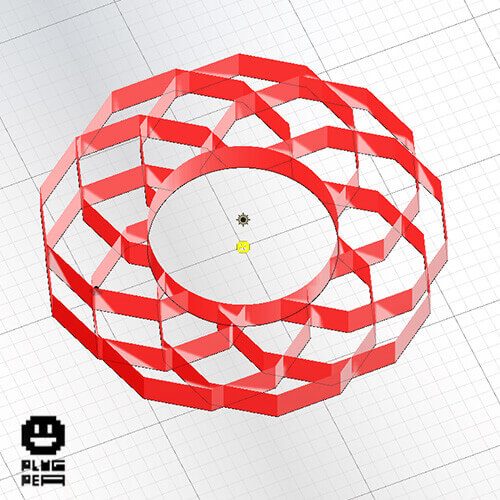
Do you want specific FREE Unity Assets? Don’t miss this repository!
Criteria for Evaluation
So, you’re on the lookout for Unity plugins, huh? Great call! But before you dive into the plugin pool, let’s chat about how to evaluate these bad boys. Think of it like choosing the perfect pizza topping – it’s all about balance, my friends.
Establishing Key Criteria for Evaluating Unity Plugins
- Performance Impact: First things first, performance matters. You don’t want a plugin that turns your sleek game into a laggy slideshow. Check out reviews, do some testing, and make sure the plugin plays nice with your game’s performance.
- Ease of Integration: Let’s keep it real; nobody wants a headache when trying to fit puzzle pieces together. The ideal plugin should be like a missing puzzle piece that slides right in without making you curse at your screen. Look for user-friendly plugins that play well with Unity, and you won’t have to wrestle with integration.
- Versatility Across Different Game Genres: Imagine buying a Swiss Army knife that only cuts butter. Not so handy, right? Your chosen plugin should be versatile, able to handle the twists and turns of different game genres. Whether you’re cooking up a horror game or a vibrant platformer, the plugin should be your kitchen multitool.
- Community Support and Updates: Community vibes are crucial. Is there a group of friendly folks out there using the same plugin, ready to lend a hand when you’re stuck? Also, check if the plugin gets regular updates. You don’t want to be stuck with yesterday’s news in a rapidly evolving Unity world.
Emphasizing the Importance of a Balanced Evaluation Approach
Now, let’s talk about balance, the unsung hero of plugin evaluation. It’s like choosing toppings for your pizza; you want a bit of everything for that perfect flavor.
Sure, a plugin might have fantastic performance, but if it’s as user-friendly as assembling IKEA furniture without instructions, maybe it’s not the one. Similarly, a plugin might be the sweetheart of one game genre, but if it’s as versatile as a one-hit wonder, it might not be the best fit for your game.
The key is to strike a balance. Consider all the criteria, weigh them against each other, and find the sweet spot that aligns with your game development needs. It’s like crafting the perfect cocktail – a dash of performance, a splash of ease of integration, a twist of versatility, and a garnish of community support.
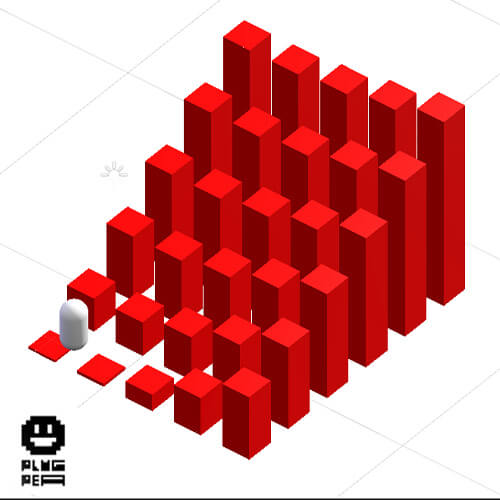
EXCELLENT unity asset free for download! Hurry up to join us.
The Contenders: Top Unity Plugins in the Market
Ready to jazz up your Unity game with some killer plugins? Well, buckle up, because I’ve got the lowdown on the top contenders in the market. These plugins are like the superheroes of Unity, each bringing their own unique powers to the game dev party.
Introducing and Providing Brief Profiles of Each Selected Unity Plugin
- Cinemachine: Picture this – you want your game to have that epic movie vibe. Enter Cinemachine, the maestro behind cinematic storytelling. This plugin is your go-to for crafting jaw-dropping camera sequences. It’s like having your own Spielberg moment right in Unity.
- Playmaker: Now, not everyone speaks fluent code, and that’s where Playmaker struts in. This beauty is all about visual scripting, making game logic a piece of cake for non-programmers. It’s like the magic wand that streamlines your workflow and lets you focus on the creative fun stuff.
- Bolt: If you’re into visual scripting but want a bit more pizzazz, meet Bolt. It’s the rockstar of intuitive visual scripting, bringing creative game logic to the forefront. Think of it like painting with logic – a stroke here, a node there, and voila, you’ve got game magic happening.
- Shader Graph: Let’s talk visuals. If you’re dreaming of stunning graphics that make your players go “Whoa,” Shader Graph is your ticket. It’s a node-based shader editor, giving you the power to create visuals that could make a Picasso jealous. Unleash your inner artist and make your game a visual masterpiece.
- Final IK: Ever wondered how to make your game characters move and interact like they just stepped out of real life? Final IK is the answer. This plugin is your ticket to achieving realistic character animations and interactions without breaking a sweat. It’s like having a motion-capture studio in your Unity workspace.
Highlighting the Unique Features and Selling Points of Each Plugin
- Cinemachine: It’s not just a camera system; it’s a cinematic experience creator. Cinemachine allows you to orchestrate camera movements, follow characters dynamically, and switch perspectives seamlessly. Direct your game like a blockbuster movie director.
- Playmaker: Code-free game logic is the name of the game here. With Playmaker, you drag and drop actions, connect nodes, and watch the magic happen. It’s like turning game development into a visual storytelling adventure, perfect for those who speak the language of creativity.
- Bolt: Visual scripting with a flair. Bolt takes the simplicity of visual scripting and adds a dash of sophistication. It’s beginner-friendly yet robust enough for experienced developers. Let your creative juices flow as you craft intricate game logic with ease.
- Shader Graph: Graphics, graphics, graphics. Shader Graph lets you create shaders without diving into complex code. Whether you want to make things glow, sparkle, or look like they’re from another dimension, Shader Graph makes it as easy as connecting the dots.
- Final IK: Realism, meet simplicity. Final IK simplifies the process of achieving lifelike character animations and interactions. Whether it’s precise limb movements or natural interactions between characters, this plugin does the heavy lifting, so you can focus on storytelling.
So, Unity Assets Seekers, these are the heavy hitters in the Unity plugin arena. Pick your weapon of choice, and let the game development adventures begin! Happy creating!
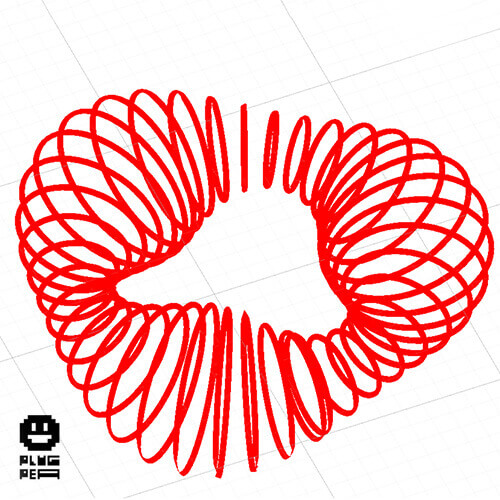
If you need immediate unity asset free: Go to our repository.
Round 1: Performance Impact
Alright, let’s dive into the nitty-gritty of our plugins – we’re talking performance, the MVP of game development. Because who wants a game that moves like a snail, right?
In-depth Analysis of Each Plugin’s Impact on Game Performance
- Loading Times:
- Cinemachine: It’s like the VIP pass for loading times. Cinemachine is surprisingly light on the system, ensuring your players aren’t stuck waiting in line forever. Smooth transitions, minimal loading – that’s the name of the game.
- Playmaker: Quick as a hiccup. Playmaker won’t bog down your loading times. It’s the cool kid at the party, making sure things kick off without any awkward pauses. Your game will be up and running before you finish your cup of coffee.
- Bolt: Think of Bolt as the sprinter of the group. It doesn’t mess around with loading times. You hit play, and boom, you’re in the game. No time for a snack break – your game is already stealing the show.
- Shader Graph: Surprisingly light on its feet. Shader Graph won’t slow you down during loading. It’s the ninja in the shadows, making sure your game emerges swiftly and without a trace of loading lag.
- Final IK: Efficient and effective. Final IK won’t throw a loading party in your game. It slips in seamlessly, making sure your players don’t even have time to check their phones during loading screens.
- Frame Rates:
- Cinemachine: Smooth operator. Cinemachine knows how to dance with frame rates, keeping them groovy and consistent. No jitters, no hiccups – just a buttery-smooth gaming experience.
- Playmaker: Frame rates? Playmaker’s got the moves. It’s a dance floor maestro, ensuring that your game’s frame rates are on point. No one likes a game that trips over its own feet.
- Bolt: Synced and steady. Bolt won’t throw your frame rates off balance. It’s like having a frame rate conductor, making sure every element in your game hits the right note.
- Shader Graph: Graphics without the drama. Shader Graph knows how to keep frame rates in check while delivering stunning visuals. It’s the magician that pulls off the graphics trick without sacrificing performance.
- Final IK: Realistic movements, realistic frame rates. Final IK is the choreographer, ensuring that character animations look lifelike without causing your frame rates to do the cha-cha.
- Memory Usage:
- Cinemachine: Memory-friendly. Cinemachine knows how to use memory wisely, leaving plenty of room for your game to breathe. It’s like a minimalist artist – impactful without hogging all the canvas.
- Playmaker: Light on the memory. Playmaker won’t be the memory hog in your Unity workspace. It’s the tidy roommate that keeps its stuff in its own corner, leaving the rest of the space clutter-free.
- Bolt: Efficient memory manager. Bolt doesn’t believe in excess baggage. It uses memory judiciously, ensuring that your game doesn’t feel like it’s carrying a ton of unnecessary weight.
- Shader Graph: Memory-savvy visuals. Shader Graph creates eye-catching visuals without going on a memory spree. It’s the magician’s trick – creating illusions without leaving a memory mess behind.
- Final IK: Minimal memory footprint. Final IK is the minimalist in the memory department. It achieves realistic animations without leaving a memory trail that looks like a herd of elephants passed through.
Comparative Assessment of How Each Plugin Stands Out in Terms of Performance
Alright, let’s lay it out in the open:
- Cinemachine: If you want a seamless game experience with minimal loading times, smooth frame rates, and a memory-friendly approach, Cinemachine is your go-to director.
- Playmaker: Non-programmer’s paradise. It keeps loading times short, frame rates smooth, and memory usage light, all while letting you script without touching a single line of code.
- Bolt: Intuitive scripting without the performance sacrifice. Bolt ensures fast loading, steady frame rates, and efficient memory usage, making it a powerhouse for creative game logic.
- Shader Graph: Visuals without the baggage. It offers stunning graphics with minimal impact on loading times, frame rates, and memory usage, perfect for creating eye-popping visuals without compromising performance.
- Final IK: Realism without the weight. Achieve realistic character animations and interactions with Final IK, all while keeping loading times short, frame rates smooth, and memory usage minimal.
So there you have it, Unity Assets Seekers! The performance showdown of our plugins. Choose wisely, and may your games run smoother than a buttered-up banana peel on a slip ‘n’ slide. Happy gaming!

Download Unity assets for free. What time is better than now?
Round 2: Ease of Integration
Welcome to Round 2 of our plugin showdown! Today, it’s all about integration – making these babies play nice with your Unity projects. Because who wants a plugin that’s harder to handle than a Rubik’s Cube blindfolded, right?
Exploring the Ease of Integrating Each Plugin into Unity Projects
- Installation Process:
- Cinemachine: Installing Cinemachine is like making instant noodles – quick and easy. It’s a breeze. Just follow a few simple steps, and you’re ready to roll camera-style.
- Playmaker: Installing Playmaker is as easy as putting together Lego blocks. It’s a drag-and-drop affair. No coding, just visual scripting goodness. Your game logic will thank you.
- Bolt: Bolt’s installation is like setting up your gaming console. Plug and play. It walks you through the process, and before you know it, you’re in the visual scripting wonderland.
- Shader Graph: Shader Graph’s installation is like downloading a cool app. It’s straightforward, with clear instructions. Say goodbye to the days of wrestling with code for stunning visuals.
- Final IK: Final IK’s installation is smoother than a milkshake. It guides you through, making sure your characters are ready to bust some realistic moves in no time.
- Compatibility with Various Unity Versions:
- Cinemachine: Cinemachine is like a Unity chameleon – it adapts to different versions like a pro. Whether you’re rocking Unity 2019 or the latest and greatest, Cinemachine’s got your back.
- Playmaker: Playmaker is the Unity version whisperer. It plays nice with various versions, so you don’t have to worry about compatibility hiccups. Your game stays in sync with the times.
- Bolt: Bolt is the time traveler of Unity versions. It spans across different eras, ensuring that your visual scripting adventures don’t get stuck in the past.
- Shader Graph: Shader Graph is the unity (pun intended) in diversity. It’s compatible with different versions, letting you create visuals that are always up-to-date.
- Final IK: Final IK is the compatibility maestro. It dances effortlessly across Unity versions, making sure your character animations stay in harmony, no matter which version you’re vibing with.
- Learning Curve for Implementation:
- Cinemachine: Learning Cinemachine is like riding a bike with training wheels. It’s beginner-friendly, and you’ll be creating cinematic experiences in no time.
- Playmaker: No coding, no problem. Playmaker’s learning curve is like a gentle slope. It’s perfect for non-programmers who want to dive into visual scripting without a steep climb.
- Bolt: Bolt is the friend who guides you through a new city. Its learning curve is smooth, with plenty of resources to help you master the art of visual scripting without pulling your hair out.
- Shader Graph: Shader Graph’s learning curve is like learning to draw with stencils. It simplifies the complex world of shaders, letting you create stunning visuals without needing a degree in graphic design.
- Final IK: Final IK’s learning curve is like learning dance moves on TikTok. It’s fun and intuitive, making character animations a joyous experience, even if you’re not a seasoned animator.
User Testimonials and Experiences with Each Plugin’s Integration
- Cinemachine: Users rave about how seamlessly Cinemachine blends into Unity projects. The ease of setting up dynamic cameras and creating cinematic sequences gets a standing ovation.
- Playmaker: Non-programmers rejoice! Users love how Playmaker turns scripting into a visual playground. The drag-and-drop simplicity has made many game logic dreams come true.
- Bolt: Users applaud Bolt for being a visual scripting wizard. The community support and the plugin’s ability to simplify complex logic have made it a favorite among developers.
- Shader Graph: Graphic enthusiasts cheer for Shader Graph’s user-friendly approach to creating shaders. It’s like painting with pixels, and users appreciate the freedom it gives without the headache of coding.
- Final IK: Animators high-five Final IK for its straightforward integration. Users express how it brings characters to life without the hassle, and the realism achieved in animations steals the show.
So there you have it, Unity Assets Seekers! Round 2 concludes, and it looks like these plugins aren’t just powerful; they’re friendly neighbors in your Unity project. Choose your sidekick wisely, and let the integration party begin! Happy developing!
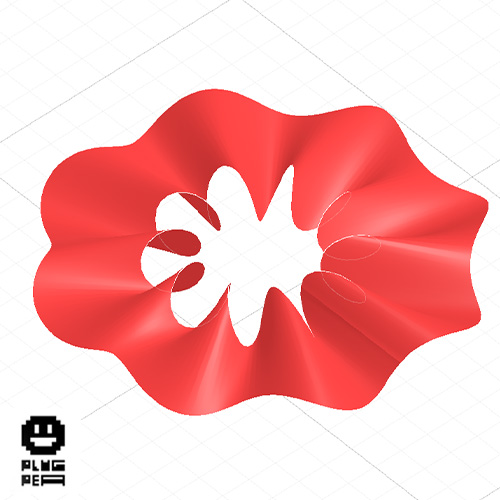
If you want to develop a game or design a structure, sure you have to have a lot of assets. Well, Here you are: unity assets free.
Round 3: Versatility Across Genres
Round 3 – and it’s time to see which of our plugins can pull off the gaming genre wardrobe change. Because let’s face it, your game might be a superhero blockbuster or a cozy indie romance. Let’s see how these plugins play dress-up!
Evaluating How Well Each Plugin Caters to Different Game Genres
- Compatibility with 2D and 3D Games:
- Cinemachine: Cinemachine is the chameleon of game genres. It works its magic in both 2D and 3D worlds, ensuring your side-scrolling platformer or epic 3D adventure gets the camera treatment it deserves.
- Playmaker: Playmaker is the jack-of-all-trades. Whether your game is a cute 2D puzzle or an expansive 3D RPG, Playmaker’s visual scripting works seamlessly, adapting to the gameplay like your favorite pair of jeans.
- Bolt: Bolt is the genre-fluid hero. It dances effortlessly between 2D and 3D, making it a versatile choice for your game, no matter the dimension it calls home.
- Shader Graph: Shader Graph is the Picasso of visuals in both realms. Whether you’re crafting a pixel-perfect 2D wonderland or sculpting a 3D masterpiece, Shader Graph adds that extra touch of visual flair.
- Final IK: Final IK’s realistic animations shine in both dimensions. Whether your characters are jumping through pixelated hoops or strutting their stuff in a 3D open world, Final IK has their back – or limbs.
- Applicability in Various Gaming Platforms (PC, Mobile, VR, etc.):
- Cinemachine: Cinemachine is the globe-trotter of gaming platforms. It’s at home on PC, consoles, mobile devices – you name it. VR, too! It’s the jetsetter ensuring your game looks fantastic wherever it lands.
- Playmaker: Playmaker is the backpacker of gaming platforms. It travels light and fits right in on PC, mobile, and even VR. Your game logic goes on an adventure without worrying about where it’s headed.
- Bolt: Bolt is the tech-savvy traveler. It explores the realms of PC, mobile, and VR with ease. No need for a map; Bolt’s got the coordinates for your game logic’s journey.
- Shader Graph: Shader Graph is the fashion model strutting on all the runways. Whether it’s PC, mobile, or VR, Shader Graph ensures your visuals are turning heads on every platform.
- Final IK: Final IK is the globetrotter of character animation. From PC to mobile and VR, it’s the travel buddy that ensures your characters move realistically, no matter where the game takes them.
Showcasing Real-World Examples of Games That Benefited from Specific Plugins
- Cinemachine: Ever played “Hollow Knight”? Cinemachine’s dynamic cameras made the atmospheric 2D world even more immersive, giving players a cinematic experience as they explored the depths.
- Playmaker: “Rollercoaster Tycoon Adventures” took a leap into the mobile realm with Playmaker, making game logic creation a breeze without diving into code. Non-programmers shaped their own theme park dreams.
- Bolt: “Raft” sailed smoothly into both PC and VR waters with Bolt handling the game logic. The intuitive visual scripting made crafting, surviving, and thriving in a floating world accessible to all.
- Shader Graph: “Monument Valley 2” wowed players on mobile platforms with Shader Graph’s visual magic. The stunning graphics, achieved without complex coding, turned the game into a visual masterpiece.
- Final IK: “Beat Saber,” the VR sensation, nailed its rhythm-based swordplay with Final IK. Characters moved realistically, adding an extra layer of immersion to the game’s VR experience.
These plugins aren’t just one-trick ponies; they’re ready to join your game’s versatile ensemble, no matter the genre or platform. Pick the one that suits your game’s style, and let the genre-hopping adventure begin! Happy gaming!
Round 4: Community Support and Updates
We’ve reached Round 4, where we’re diving into the community vibe and updates – because you don’t want to be stuck with a plugin that’s like a ghost town or one that’s gathering dust in a digital corner, right?
Analyzing the Strength of Each Plugin’s Community Support
- Active Forums and Communities:
- Cinemachine: Cinemachine’s community is like a bustling marketplace. Forums, Discord channels, you name it – there’s a lively crowd sharing tips, tricks, and cheering each other on. It’s the place to be for all things camera-related.
- Playmaker: Playmaker’s community is like a cozy neighborhood. Whether you’re a scripting rookie or a seasoned pro, the forums are buzzing with friendly advice and shared experiences. It’s like having a bunch of helpful neighbors next door.
- Bolt: Bolt’s community is the cool hangout spot. Forums and Discord are alive with discussions, and fellow Bolt users are always ready to lend a hand. It’s the place where visual scripting enthusiasts exchange high-fives.
- Shader Graph: Shader Graph’s community is an art gallery and a workshop combined. Whether you’re into pixel art or 3D masterpieces, forums and social media are abuzz with artists sharing their creations and tips. It’s a visual feast.
- Final IK: Final IK’s community is the dance floor of animations. Forums and Discord are filled with users grooving to the beat of realistic character movements, sharing insights, and helping each other nail those dance steps.
- Developer Responsiveness:
- Cinemachine: The developers behind Cinemachine are like backstage magicians. They’re not just crafting powerful cameras; they’re also active in the community, addressing concerns, and occasionally dropping hints about new features. It’s like having a direct line to the wizard.
- Playmaker: Playmaker’s developers are the friendly neighbors. They’re present in the community, listening to feedback, and popping in to say hello. It’s like having a chat over the backyard fence, but about game development.
- Bolt: Bolt’s developers are the cool cats at the party. They’re engaged with the community, addressing issues, and occasionally spilling the beans about what’s cooking in the Bolt kitchen. It’s like having a backstage pass to the visual scripting concert.
- Shader Graph: Shader Graph’s developers are the artists in the studio. They’re actively involved in the community, offering guidance and occasionally sharing sneak peeks of upcoming shader magic. It’s like having a conversation with the artists behind the canvas.
- Final IK: Final IK’s developers are the dance instructors. They’re on the floor, helping users with their moves, and occasionally dropping knowledge bombs about the world of character animations. It’s like having a personal coach for your character choreography.
Examining the Frequency and Relevance of Updates for Ongoing Improvement
Now, let’s talk updates:
- Cinemachine: Cinemachine is like a fine wine – it gets better with time. Regular updates bring new features and improvements, keeping it at the forefront of cinematic experiences in Unity.
- Playmaker: Playmaker is the Swiss Army knife of visual scripting, and updates are like getting new gadgets. Regular additions and tweaks ensure your game logic toolbox stays fresh and powerful.
- Bolt: Bolt is the evolving artist’s palette. Frequent updates bring new colors to the visual scripting canvas, making sure your creative process never gets stale.
- Shader Graph: Shader Graph is the ever-expanding art studio. Updates bring new brushes and techniques, keeping your visual creations in Unity on the cutting edge of graphics.
- Final IK: Final IK is the dance floor that never stops evolving. Updates bring smoother moves, additional features, and improvements, ensuring your character animations stay in the groove.
So, Unity Assets Seekers, in Round 4, it’s clear these plugins aren’t just standalone tools; they’re part of vibrant communities, and their developers are like friends at a game dev party. Pick the one that feels like your kind of hangout, and let the creative collaboration continue! Happy developing!
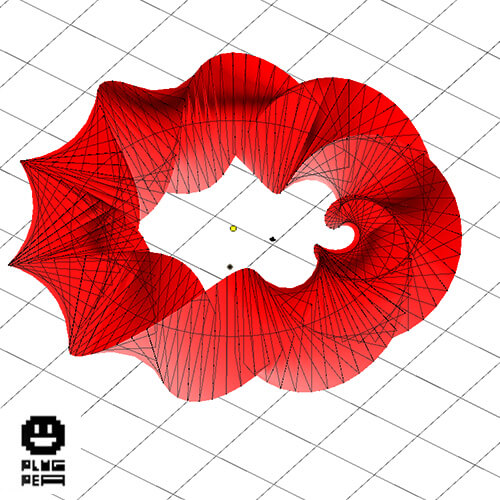
10+ Free Unity Assets Here. You can explore and download.
The Verdict: Best Unity Plugin Announced
Drumroll, please! We’ve put our plugins through the ringer, and it’s time to drop the verdict on which one deserves the crown. Imagine this as the grand finale of your favorite reality show, but with pixels and lines of code. Let’s break it down!
Summarizing the Evaluations and Comparisons
Performance Impact:
- Cinemachine: Smooth operator in loading times, frame rates, and memory usage.
- Playmaker: Non-programmer’s paradise with a lightweight performance footprint.
- Bolt: Intuitive scripting without sacrificing performance.
- Shader Graph: Stunning visuals with minimal impact on performance.
- Final IK: Realism without the memory hogging.
Ease of Integration:
- Cinemachine: Like setting up instant noodles – quick and easy.
- Playmaker: Drag-and-drop simplicity for non-programmers.
- Bolt: Plug-and-play visual scripting.
- Shader Graph: Straightforward installation for complex visuals.
- Final IK: Smoother than a milkshake to integrate.
Versatility Across Genres:
- Cinemachine: Chameleon-like compatibility with 2D, 3D, and various platforms.
- Playmaker: Jack-of-all-trades, rocking both 2D and 3D across different platforms.
- Bolt: Genre-fluid hero dancing between dimensions and platforms.
- Shader Graph: Fashion model strutting across PC, mobile, and VR runways.
- Final IK: Globetrotter of character animation across diverse platforms.
Community Support and Updates:
- Cinemachine: Lively community and developer engagement with regular, relevant updates.
- Playmaker: Cozy neighborhood with developers as friendly neighbors, constant updates.
- Bolt: Cool hangout spot with responsive developers and a steady flow of updates.
- Shader Graph: Art gallery and workshop community with active developer involvement.
- Final IK: Dance floor of character animation with engaged developers and ongoing updates.
Declaring the Winner and Justifying the Choice Based on the Criteria
And the winner is… Cinemachine!
Why, you ask? Well, it’s like this:
Cinemachine nails the cinematic experience without breaking a sweat on the performance front. It’s a versatile beast, smoothly integrating into both 2D and 3D worlds across various gaming platforms. The community support is like a bustling marketplace, and the developers are like wizards in the background, making sure Cinemachine stays on top with regular updates.
So, Unity Assets Seekers, whether you’re crafting an epic RPG, a cozy mobile game, or a mind-bending VR experience, Cinemachine is the director you want in your game dev crew. Grab your popcorn; it’s time to make some Unity magic! Happy developing!
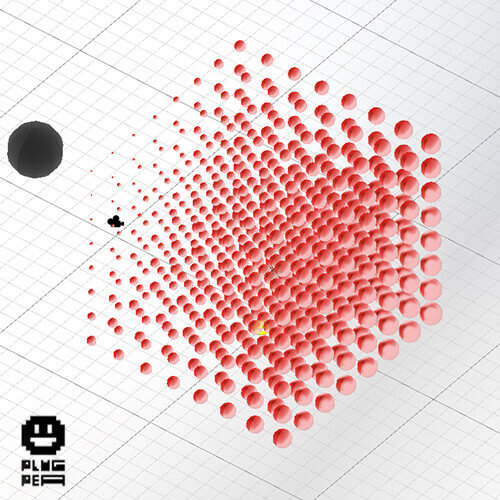
How To Find the Best Free Unity Assets? Click on the Link!
User’s Guide: Maximizing Your Unity Plugin Experience
Your ticket to squeezing every drop of awesomeness from your Unity plugins. Let’s turn your game dev journey into a joyride!
Tips for Effective Use of Unity Plugins in Game Development
- Read the Manual (Yeah, Seriously!): It’s like reading a treasure map. Dive into those manuals. It might seem like a snooze, but hidden gems of knowledge are waiting. You’ll be wielding your plugins like a pro in no time.
- Stay Updated: Plugins are like good friends; they get better with time. Keep an eye on updates. Developers are constantly adding new features and fixing bugs. Don’t be stuck in the past – update and embrace the shiny new stuff.
- Experiment, Don’t Hesitate: Unity’s your sandbox, and plugins are your toys. Don’t be shy; try out different settings, play with configurations. Sometimes the best discoveries happen when you’re just goofing around.
- Community Connection: Ever heard the saying, “It takes a village”? Well, it takes a community too. Forums, Discord, social media – jump in. Share your victories, ask for help, and join the conversation. The Unity community is like one big, helpful family.
- Backup Your Project: Murphy’s Law loves game development. Back up your project regularly. Losing hours of work hurts. But with a backup, it’s just a minor hiccup.
Troubleshooting Common Issues and Challenges
- Check for Updates (Yes, Again!): If something’s wonky, check for updates. Bugs are like pesky mosquitoes – developers are usually quick to squash them. An update might just be the insect repellent your project needs.
- Logs are Your Friends: Error messages are like secret codes. Dive into those logs. They might seem cryptic, but often, they point straight to the issue. Google is your ally here; someone out there has likely faced the same problem.
- Reimport Assets: Unity’s memory can be forgetful. If things are acting up, try reimporting your assets. It’s like giving Unity a friendly reminder of what it’s working with.
- Isolate the Culprit: Got a bunch of plugins? Temporarily disable them one by one. It’s like detective work. Sometimes the misbehaving one stands out, and you can send it to plugin time-out until it learns its lesson.
- Reach Out for Help: Unity forums, Stack Overflow, and other platforms are like emergency hotlines. If you’re stuck, chances are someone’s been there, done that, and is willing to share their wisdom.
Recommendations for Combining Plugins for Enhanced Functionality
- Cinemachine + Shader Graph = Visual Symphony: Cinemachine for those breathtaking camera moves, Shader Graph for visuals that’ll make players gasp. Combine these, and your game is basically a work of art in motion.
- Playmaker + Bolt = Visual Scripting Overdrive: Why settle for one when you can have both? Playmaker for the easy-peasy stuff, Bolt for when you want to flex those visual scripting muscles. It’s like having the best of both coding worlds.
- Final IK + Cinemachine = Realism Overload: Cinemachine sets the scene, and Final IK adds the realism. Imagine characters moving as naturally as your morning stretch. It’s a dynamic duo for lifelike animations.
- Shader Graph + Playmaker = Visually-Driven Logic: Bring visuals and logic together in a harmonious dance. Shader Graph for stunning visuals, Playmaker for scripting without breaking a sweat. It’s like a symphony of game development.
- Bolt + Shader Graph = Code-Free Visual Extravaganza: The powerhouse combo for the visually inclined. Bolt for logical simplicity, Shader Graph for eye-popping visuals. It’s like creating a game with a magical wand.
Remember, these plugins are your tools, and game development is your canvas. Mix, match, experiment, and turn your game dev dreams into reality. Happy creating!
Conclusion
In the grand finale of our “Unity Assets Showdown,” Cinemachine emerged as the star of the show, offering unparalleled cinematic experiences and versatility across genres.
Now, dear Unity Assets Seekers, it’s time to dive into the winner, unleash its potential, and see your game development aspirations soar.
As we celebrate Cinemachine’s triumph, let’s remember that in the ever-evolving landscape of Unity game development, each plugin brings its unique magic – so share your thoughts below and let’s keep the conversation going! Which plugin stole your heart, and what’s your game dev secret sauce?

